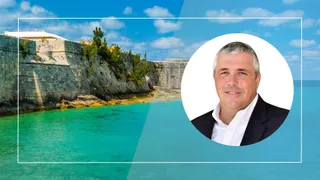
Convergence: ILS could fill SCS gap
Severe convective storms represent an opportunity for the insurance-linked securities market, according to risk modelling pioneer Karen Clark.
Clark, the founder and chief executive officer of Karen Clark and Company, said SCS, which have cost the insurance industry billions of dollars, were an example of capacity shortage which ILS vehicles could meet.
“Demand for SCS is rising and supply is shrinking because balance sheet insurers are moving away from it,” she said, adding that it was not possible to use historic data to model SCS.
Clark was speaking on a panel entitled “Harnessing the Science: Perspectives from Society”.
Responding to comments from Massachusetts Institute of Technology professor Kerry Emanuel, she said her company used a physics-based modelling approach. In the case of SCS, she said only the most current atmospheric data could be used.
“it is the largest risk by far for large aggregate losses,” she said. “We can model it as an industry
She added that the random nature of climate meant that it made more sense to cover SCS on an aggregate basis. What the insurance industry wanted in reinsurance contracts did not necessarily cover that the weather would she, she said.
Matthew Swann, director & head of research, Integral ILS , agreed that the focus of meteorological models did not necessarily conform with insurance business models.
But he said there was a risk that normalising for frequency of events could lead to aggregate contracts becoming very expensive.
“So it is an opportunity, and there is a retrenchment of the risk, but I feel like there is still a way to go it resolve it,” he said.
He added thar catastrophe models were a powerful toolkit but the industry had to ensure the models being used were fit for purpose and captured the latest science.
“Catastrophe models are an invaluable framework for our view of risks, but there is a latency there,” he said. “It takes time to build them, as they should, but the latest research is not sitting in the latest models and IPCC research.”
Oli Morran, senior director of product management, Moody’s , said the foundational measurement tools of models needed to reflect dynamic elements like inflation, climate and exposure changes.
He said exposure uncertainty was a factor that was not as well understood as it should be and that a large number of ILS transactions were still based on aggregated data to make up for the lack of access to real data.
Peter Schlosser, head of The Futures Laboratory at Arizona State University, said there needed to be more thought about a way forward for communities.
He said the wider community needed to think about how to recover from natural catastrophes to avid seeing losses occur again and again.
This could include rebuilding more resiliently but he noted that after Hurricane Sandy hit New York City it was the insurers who had a more practical solution to problems of extreme weather events – they simply said they would not insure buildings any more if changes were not made.
“We need to think further ahead with SCS,” he said. “We need to change the way we live on the planet to reduce losses in the future.”
Did you get value from this story? Sign up to our free daily newsletters and get stories like this sent straight to your inbox.

